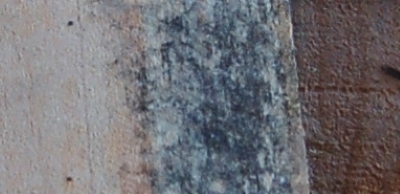Fungi
Unlike plants, fungi are unable to manufacture their own food supplies internally. This means they need to find an external source of food, often in the form of dead plants or animals. For particular species of fungi, their food source is wood tissue – either in a living tree, dead branches and logs, or processed timber.
Fungal attack in wood begins when the tiny spores land on a surface that allows them to germinate. Conditions that favour fungal growth include:
a suitable moisture content in the timber, generally at least 20%
an adequate oxygen supply
a temperature range that suits their life cycle
enough nutrients to support their growth.
Fungi that attack timber can be classified into two main groups: those that destroy the wood fibres and those that disfigure (spoil the appearance of) the wood.

Wood destroying fungi
Wood destroying fungi are also called decay fungi, because they feed on the cell walls and cause the wood fibres to break up and crumble away. The three main types are brown rot, white rot and soft rot.
Brown rot feeds mainly on the lighter-coloured cellulose in the wood fibres. It leaves the darker lignin intact, giving the surface a dark brown look with deep cracks running lengthwise and across the area. Because the decayed timber usually feels dry and flaky, it’s often called ‘dry rot’.
But this term is a bit misleading, considering that for the attack to occur in the first place, the moisture content of the timber must be at least 20%.

White rot attacks the cellulose and lignin, leaving a whitish deposit behind. The decayed timber doesn’t crumble as much as in brown rot, and there is more likely to be pockets of decayed wood surrounded by sound areas.

Soft rot is different in appearance from brown and white rot, and less common. This form of decay tends to make longitudinal cavities in the cell walls, particularly in hardwoods.
Wood disfiguring fungi

These fungi generally have no effect on the strength of the timber, because they don’t attack the cell walls. But they can still be a serious problem in appearance grades due to the discolouration they cause. The two types of fungi in this category are sap stain fungi and surface moulds.
Sap stain fungi feed on the sugars and starches inside the wood rays, rather than on the cells walls. This is why they’re not a problem in structural timber – they aren’t breaking down the wood fibres. In softwoods, the most common form is blue stain, which is a particular problem in sawlogs left lying around in warm humid conditions.

Surface moulds produce a powdery or woolly growth on the surface of the timber. They often leave behind a grey, green, brown or orange discolouration.
Some surface moulds will even grow on top of preservative treated timber, particularly when the timber is covered by dust, which helps to trap moisture.